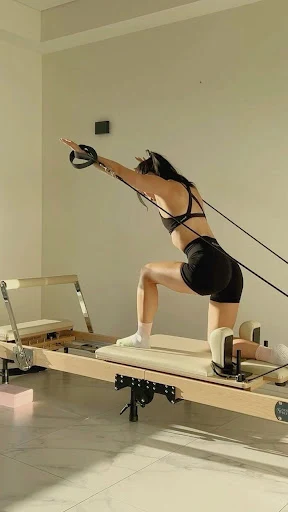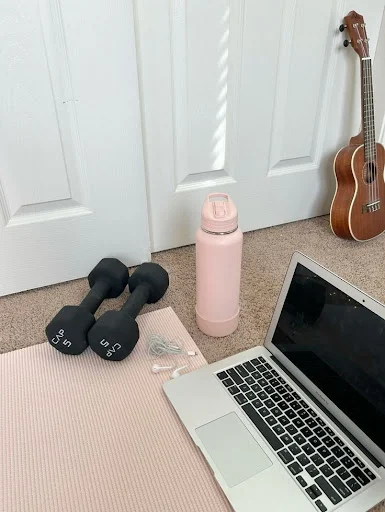The Best Activities to Lose Weight for Non-Gym Enthusiasts: Ballet, Swimming, and Beyond
For many, the thought of hitting the gym conjures images of intimidating equipment, crowded spaces, and monotonous routines. If you’re someone who dreads the gym or simply prefers more engaging and enjoyable ways to stay active, you’re not alone. Luckily, there are countless ways to lose weight and stay fit without ever stepping foot in a gym. In this post, we’ll explore some of the best activities to practice if you’re looking to shed pounds while having fun and staying motivated. From the graceful movements of ballet to the refreshing laps in a swimming pool, there’s something for everyone.
1. Ballet: Elegance Meets Exercise
Why Ballet?
Ballet is often associated with grace and beauty, but it’s also an incredibly effective workout. This form of dance requires strength, flexibility, and endurance, making it a full-body workout. Ballet improves posture, tones muscles, and increases flexibility—all while burning calories.
The Benefits of Ballet
- Full-Body Workout: Ballet engages various muscle groups simultaneously, including the core, legs, and arms.
- Flexibility and Strength: Regular practice improves flexibility and builds muscle strength.
- Mental Benefits: Ballet requires concentration and discipline, providing mental clarity and reducing stress.
- Calorie Burn: An hour of ballet can burn between 400 to 600 calories, depending on the intensity.
Getting Started with Ballet
If you’re new to ballet, many studios offer beginner classes that focus on basic techniques and movements. You can also find numerous online resources and tutorials to get started at home. Remember to wear comfortable clothing that allows for a full range of motion and invest in a good pair of ballet slippers.
2. Swimming: Dive into Fitness
Why Swimming?
Swimming is an excellent cardiovascular workout that’s easy on the joints, making it ideal for people of all fitness levels. The resistance of water provides a full-body workout without the high impact of land-based exercises.
The Benefits of Swimming
- Low-Impact Exercise: Swimming is gentle on the joints, reducing the risk of injury.
- Cardiovascular Health: It improves heart health and increases lung capacity.
- Muscle Toning: Water resistance helps tone muscles and improve strength.
- Calorie Burn: An hour of swimming can burn between 400 to 700 calories, depending on the stroke and intensity.
Getting Started with Swimming
To begin swimming, all you need is access to a pool and a swimsuit. Many communities have public pools with lap swimming hours. If you’re new to swimming, consider taking a few lessons to learn proper techniques. You can also join a local swim club or find online workouts to follow.
3. Dancing: Groove Your Way to Fitness
Why Dancing?
Dancing is a fun and social way to get moving and lose weight. Whether it’s salsa, hip-hop, or ballroom dancing, there’s a style for everyone. Dancing improves cardiovascular health, coordination, and overall fitness.
The Benefits of Dancing
- Variety of Styles: There’s a dance style to suit every preference and fitness level.
- Social Interaction: Dancing can be a social activity, helping to build connections and support networks.
- Improved Coordination: It enhances balance, coordination, and agility.
- Calorie Burn: Depending on the style and intensity, dancing can burn between 300 to 600 calories per hour.
Getting Started with Dancing
Look for dance classes in your community or consider joining a dance club. Many gyms and studios offer a variety of dance fitness classes like Zumba, which combines dance and aerobic movements. Online tutorials and virtual classes are also great options if you prefer to dance at home.
4. Hiking: Explore the Great Outdoors
Why Hiking?
Hiking is a fantastic way to combine exercise with the beauty of nature. It provides a cardiovascular workout while engaging the muscles in your legs and core. Hiking can vary in intensity from a leisurely walk to a challenging climb, making it suitable for all fitness levels.
The Benefits of Hiking
- Cardiovascular Health: Hiking improves heart health and endurance.
- Strength and Endurance: It strengthens the muscles in your legs, glutes, and core.
- Mental Health: Being in nature reduces stress and improves mental well-being.
- Calorie Burn: An hour of hiking can burn between 400 to 700 calories, depending on the terrain and intensity.
Getting Started with Hiking
Start with local trails and gradually increase the difficulty as your fitness improves. Invest in a good pair of hiking shoes and carry water and snacks. Joining a hiking group can provide motivation and introduce you to new trails.
5. Yoga: Flexibility and Mindfulness
Why Yoga?
Yoga combines physical postures, breathing exercises, and meditation to improve flexibility, strength, and mental clarity. It’s a low-impact activity that can be tailored to any fitness level.
The Benefits of Yoga
- Improved Flexibility: Regular practice increases flexibility and range of motion.
- Strength Building: Yoga strengthens muscles, particularly the core.
- Stress Reduction: It promotes relaxation and reduces stress.
- Calorie Burn: Depending on the style, yoga can burn between 200 to 600 calories per hour.
Getting Started with Yoga
Many studios offer beginner classes, and there are countless online resources and apps available. Find a style that suits your goals—whether it’s a gentle Hatha class or a more intense Vinyasa flow. A good yoga mat and comfortable clothing are all you need to get started.
6. Cycling: Pedal to Fitness
Why Cycling?
Cycling is an enjoyable way to improve cardiovascular health, build muscle, and explore your surroundings. It can be done outdoors or on a stationary bike indoors, making it a versatile workout option.
The Benefits of Cycling
- Cardiovascular Health: Cycling improves heart health and increases stamina.
- Muscle Toning: It strengthens the legs, glutes, and core.
- Joint-Friendly: Cycling is low-impact and easy on the joints.
- Calorie Burn: An hour of cycling can burn between 400 to 600 calories, depending on speed and intensity.
Getting Started with Cycling
If you’re new to cycling, start with short rides and gradually increase your distance and intensity. Ensure your bike is properly fitted to avoid injury. Consider joining a cycling group or taking part in local events for motivation and social interaction.
7. Pilates: Core Strength and Stability
Why Pilates?
Pilates focuses on core strength, stability, and overall body awareness. It’s a low-impact exercise that can be done with minimal equipment, making it accessible for everyone.
The Benefits of Pilates
- Core Strength: Pilates targets the deep abdominal muscles and improves core stability.
- Improved Posture: It helps correct posture and alignment issues.
- Flexibility and Balance: Regular practice enhances flexibility and balance.
- Calorie Burn: Depending on the intensity, Pilates can burn between 200 to 400 calories per hour.
Getting Started with Pilates
Many studios offer Pilates classes, and there are numerous online resources and apps available. You can start with basic mat exercises and progress to using equipment like the Reformer. All you need is a comfortable mat and some space to get started.
8. Kickboxing: High-Intensity Fun
Why Kickboxing?
Kickboxing combines martial arts techniques with high-energy cardio, making it a powerful full-body workout. It’s great for building strength, improving cardiovascular health, and relieving stress.
The Benefits of Kickboxing
- Full-Body Workout: Kickboxing engages all major muscle groups.
- Cardiovascular Health: It provides an intense cardio workout.
- Stress Relief: Hitting and kicking can be a great way to relieve stress.
- Calorie Burn: An hour of kickboxing can burn between 500 to 800 calories, depending on the intensity.
Getting Started with Kickboxing
Look for local kickboxing classes or follow online workouts. Ensure you have a safe space to move around and consider using gloves and pads for added protection. Many gyms and studios offer beginner-friendly classes that teach basic techniques.
9. Rowing: Full-Body Cardio
Why Rowing?
Rowing is a low-impact, high-intensity workout that targets multiple muscle groups simultaneously. Whether on a machine or in a boat, rowing improves cardiovascular health and builds strength.
The Benefits of Rowing
- Full-Body Workout: Rowing engages the legs, core, and upper body.
- Cardiovascular Health: It improves heart health and endurance.
- Low Impact: Rowing is gentle on the joints.
- Calorie Burn: An hour of rowing can burn between 400 to 600 calories, depending on intensity.
Getting Started with Rowing
If you’re new to rowing, consider taking a class or following an online tutorial to learn proper technique. Most gyms have rowing machines, or you can look for local rowing clubs if you prefer to be on the water. A good pair of shoes and comfortable clothing are all you need.
Losing weight and staying fit doesn’t have to involve tedious hours at the gym. There are plenty of enjoyable and effective activities that can help you achieve your fitness goals. Whether you’re drawn to the elegance of ballet, the refreshing laps in a swimming pool, or the high-energy movements of kickboxing, there’s something for everyone. The key is to find an activity you love, stay consistent, and have fun along the way. Remember, the best workout is the one you enjoy and look forward to, as it ensures you’ll stick with it in the long run.






Comments
Post a Comment